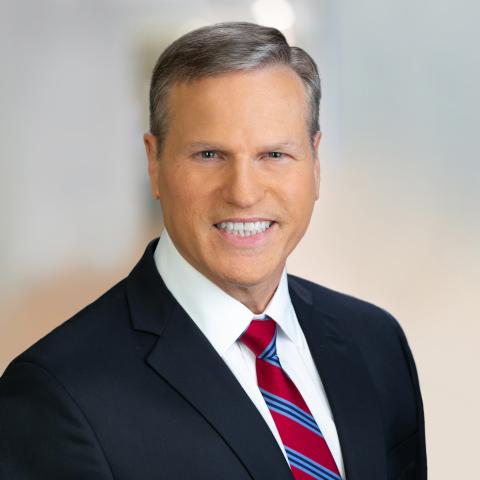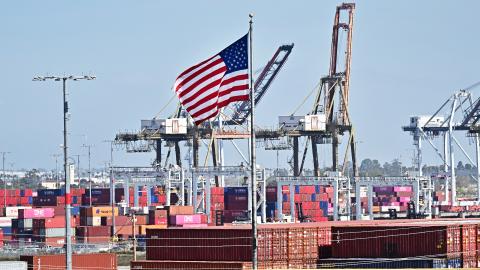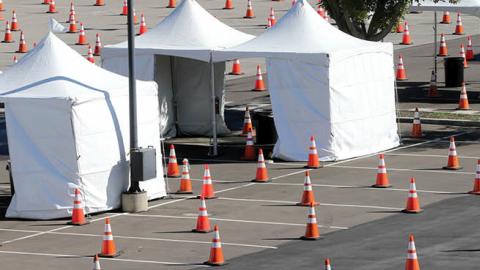“Psst…do you know where to get a COVID vaccine?” For the past few months, this question has been asked repeatedly, and urgently, by tens of millions of Americans, many of whom are resorting to the services of volunteers to navigate convoluted websites in the middle of the night. Yet at the same time, millions of Americans who are eligible for vaccines have simply refused them, with countless doses routinely ending up in the trash. To many government officials, this is but collateral damage, only minorly detracting from an otherwise successful centrally-planned distribution system. But to an economist, these are the hallmarks of failed government policies.
Sadly, in much of the rest of the world, the question of vaccine availability is also asked with increasing urgency, but with even less prospect of a consistent or public answer. That the United States—the world’s largest economy—is doing better with vaccine distribution than countries with state-run health care systems sets quite the low bar.
Between February and December of 2020, several of the world’s most innovative pharmaceutical companies developed vaccines for COVID-19. The speed at which these vaccines were developed is nothing short of miraculous, and they are a tribute to the success of competitive businesses faced with urgent global demand. Thus far, the Food and Drug Administration has approved three vaccines, but each has faced subsequent delays in global distribution.
When Americans need food, clothes, gasoline, medicine, or other essentials, we find them in abundant supply at countless stores with the government rarely, if ever, involved in distribution. Where there are willing buyers and willing sellers, government need not interfere. In America, no one ever whispers for advice on where to find these products. Our economic system works magic to benefit consumers, who are truly sovereign with choices and competitive prices. Even government assistance programs like Supplemental Nutrition Assistance Program (“SNAP”) benefits for food purchases, and Medicaid and Affordable Care Act subsidies for healthcare, operate within otherwise private markets.
But both the Trump and Biden administrations decided that COVID vaccines were too ‘important’ to be left to the usual American economic mechanisms. In most major countries around the world, including the U.S., governments directly purchase COVID vaccines. It does not take much imagination to understand that problems emerge with single government buyers. In these situations, there is too little production at too high a price, with no incentive to increase production to meet actual demand.
One need not have a terribly long memory to recount similar tragedies in world history. Today’s vaccine shortage is particularly reminiscent of the misguided decisions of the governments of China and India to become their nations’ sole purchasers and distributers of agricultural products in the mid-20th century. The result, predictably, was severe famine—charitably called food “shortages”—a euphemism for the tragic result of disastrous government policies.
Today, we have a COVID vaccine famine in much of the world.
One need look no further than our neighbor to the north, Canada, which has lagged in vaccine distribution and hopes to have adequate supply by September. The European Union, which primarily relied on government contracts with Astra Zeneca, is in even worse shape. As is the case with many government contracts, Astra Zeneca has had production delays with seemingly no major penalties. EU member state Slovakia, outside of the EU distribution plan, purchased a Russian vaccine in desperation when other vaccines were unavailable. The Slovakian government fell as a result. The tiny nation of San Marino, flush with Russian vaccines, is the envy of its neighbor Italy, with comparatively few vaccines. Many of the poorest countries around the world are left to simply wait their turn. In the meantime, the spread of COVID rages on, and new variants emerge, threating not just those nations, but the rest of the world too.
Here in the U.S., like in every other country, we took a central-planning approach to distribution. The federal government purchased all doses of the vaccine and subsequently distributed them to states, regardless of how much states would have been willing to pay for them. Vaccine prices were fixed by government contract. If consumer demand, and consequently consumer willingness to pay, was greater than the price contained within these government contracts, there was no mechanism to increase supply. Moderna, Pfizer, and Johnson & Johnson would not get paid premium prices for producing more, so they have not increased supply beyond those required by government contracts.
Consumer distribution has defied economics as well. Prices of vaccines to ordinary Americans were fixed at zero. Government agencies decided who would be first—and last—in line. Those at the front of the queue were not allowed to sell their place in line, even if an individual had no intention of ever receiving a vaccine. The predictable result of this has been the disposal of countless doses of vaccines, particularly in rural areas with lower demand for vaccines. Those who disobey and try to prevent this waste face criminal prosecution.
One needn’t have taken economics to understand that each of the above policies would lead to less supply than that of a price-based, market-driven alternative. It is impossible to calculate how many lives have been lost by central planning here in America and abroad.
Some politicians will protest that a market-based solution would lead to inequitable results, with only the wealthy benefitting. But nothing could be further from the truth. The federal government could have distributed transferable vaccine stamps—like SNAP debit cards—to elderly, health-compromised, and low-income individuals. These vaccine stamps not only could have paid for vaccines, but could have also placed individuals at the front of queues.
Transferable vaccine stamps could have allowed preferred individuals to get vaccinated early if they so chose. These stamps could also have been sold to others who were willing to pay for them. It is not difficult to imagine that in January and February, many Americans would have been willing to pay thousands of dollars to be vaccinated. If vaccine stamps were available at market prices on websites like StubHub, individuals could have bought and sold the rights to vaccines, making desperate buyers and vaccine-hesitant or neutral sellers better off.
That the COVID vaccine is being made free of charge to all Americans and centrally distributed by federal and state governments is novel, even in the highly regulated price structures of the American health insurance market. Indeed, the Centers for Disease Control and Prevention maintains a “Vaccine Price List” documenting the price for other vaccines, such as those that prevent and diphtheria and measles.
Of course, there are reasons to reach herd immunity as soon as possible, particularly with a novel virus like COVID. But the same could be said of other diseases for which there are vaccines, and for which at least a nominal price is charged to many patients. The cost of the vaccine contracts to the federal government, including development and production but not including distribution and administration, is more than $18 billion for 1.2 billion doses, with the cost per dose ranging from $4 to $20. But these costs will not be paid by the individuals receiving the vaccines.
Yet it is not difficult to imagine a scenario in which pharmacies such as CVS, Walgreens, and Walmart could purchase vaccines directly from manufacturers and charge market rates, in combination with vaccine stamps. In a competitive market, popular vaccines with high efficacy rates would command higher prices, which would in turn induce manufacturers to provide more vaccines more quickly. These winners would subsequently face competition, which would ultimately drive down prices across the board. Such a competitive market would create more vaccines, more quickly, and at a lower cost to the federal government than a central-planning approach. Consumers, including those favored by the government, would benefit enormously. Countless lives would be saved in the process.
It is far too late for the United States to correct the mistakes of COVID-19 vaccine distribution. But similar pandemics may arise again, and the future course for America should not be to repeat our current mistakes. We do not need another vaccine famine.
When individuals need to know someone or to wait in endless queues to get something of value, markets are not working. But if America harnesses, rather than ignores, the power of private markets to meet the challenges of pandemics, we can save American lives. And governments around the world will be forced to follow our lead because their citizens will demand it.
Read in RealClear Markets




















